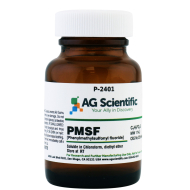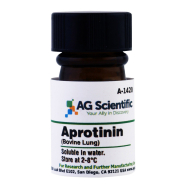Puromycin, in conjunction with the CRISPR-CAS9 system, continues to be applied for genomic purposes. In this protocol, plasmid transfections utilizing these components will be described.
Puromycin, in conjunction with the CRISPR-CAS9 system, continues to be applied for genomic purposes. In this protocol, plasmid transfections utilizing these components will be described. PHASE 1. CRISPR Activation Plasmid Transient Transfection This protocol is recommended for a single well from a 6-well tissue culture plate. Adjust cell and reagent amounts proportionately for wells or dishes of different sizes.- In a 6-well tissue culture plate seed 1.5 x105- 2.0 x105 cells in 3 ml of antibiotic-free standard growth medium per well, 24 hours prior to transfection. Grow cells to a 40-80% confluency. Initial cell seeding and cell confluency after 24 hours are determined based on the rate of cell growth of cells used for transfection. Healthy and subconfluent cells are required for successful CRISPR Activation Plasmid transfection.
- Prepare the following solutions:
- Add the Plasmid DNA solution (Solution A) dropwise directly to the dilute Transfection Reagent (Solution B) using a pipette. Vortex immediately and incubate for no less than 20 minutes at room temperature.
- Prior to transfection, replace media with fresh antibiotic-free growth medium. Add the 300 µl Plasmid DNA/Transfection Reagent Complex (Solution A + Solution B) dropwise to well.
- Gently mix by swirling the plate.
- Incubate the cells for 24-72 hours under conditions normally used to culture the cells. No media replacement is necessary during the first 24 hours post-transfection. Add or replace media as needed 24-72 hours post-transfection.
- For cells transfected with CRISPR Activation Plasmid, assay cells 48-72 hours after transfection step.

- For protein analysis, change media to standard growth medium 3 days prior to cell lysis. To lyse adherent cells, aspirate media, rinse cells with PBS, scrape and centrifuge cells at low speed to obtain a cell pellet. For suspension cells, transfer the culture to a centrifuge tube and centrifuge cells at low speed to obtain a cell pellet. Wash once with PBS and centrifuge again. For 100% confluent HEK 293 or HeLa cells, add 100 μl of RIPA Lysis Buffer System to the pellet. For other cell lines or confluencies, the amount of RIPA Lysis Buffer System to use should be determined experimentally. Sonicate or shear cells. Incubate sample on ice for 10 minutes, vortex, and incubate again for 10 minutes on ice. Spin cell lysate at 10000 RPM for 20 minutes at 4° C. Use the BCA Protein Assay Kit to determine protein concentration.
- For RT-PCR analysis isolate RNA using the method described by P. Chomczynski and N. Sacchi (1987). Single-step method of RNA isolation by acid guanidinium thiocyanate-phenol-chloroform extraction. Anal. Biochem. 162: 156-159) or a commercially available RNA isolation kit.
- Blotto A (for general use): 1x TBS, 5% milk, 0.05% Tween-20. Available Pre-made.
- Blotto B (for use with anti-phosphotyrosine antibodies): 1x TBS, 1% milk, 1% BSA, 0.05 Tween-20. In some cases, milk may be left out entirely, but this will result in somewhat higher backgrounds. Available pre-made. For all phospho-specific antibodies: Add 0.01% (v/v) of each Phosphatase Inhibitor Cocktail to inhibit phosphatase activity.
- Diaminobenzidine tetrahydrochloride (DAB): Dissolve 5 mg DAB in 100 ml 100 mM Tris-HCl, pH 7.6, and add 0.1 ml 0.3% hydrogen peroxide. Prepare fresh DAB solution daily.
- Electrophoresis buffer (2X): 100mM 2-(N-Morpholino)- ethanesulfonic acid(MES), 10 mM Na EDTA, 15% glycerol, 1.5% SDS, 0.3% Triton X-100, 100mM TCEP-HCL, 7.5 mM DTT, 0.0025% Bromophenol Blue. Available pre-made.
- Phosphate buffered saline (1x PBS): 9.1 mM dibasic sodium phosphate, 1.7 mM monobasic sodium phosphate, and 150 mM NaCl. Adjust pH to 7.4 with NaOH. Available pre-made in liquid and powder forms
- RIPA Lysis Buffer: 1x PBS, 1% Nonidet P-40 or Igepal CA-630, 0.5% sodium deoxycholate, 0.1% SDS. This may be made in large volumes. Add inhibitors at time of use from the following stock solutions. Available pre-made stock solutions:
- Subbing solution: 0.3% (w/v) gelatin, 0.05% chromium potassium sulfate in distilled H2O.
- Tris buffered saline (1x TBS): 10 mM Tris-HCl, pH 7.4; 150 mM NaCl. Available pre-made in liquid form.


